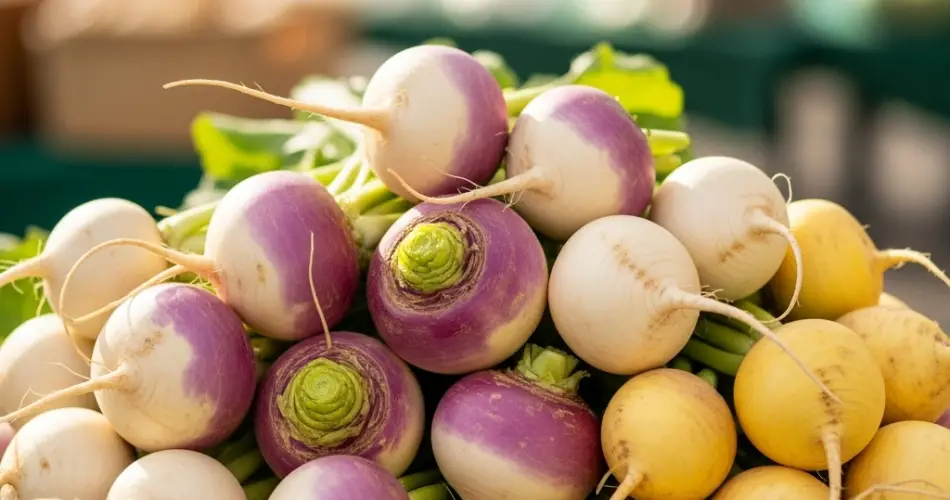Turnips are one of the most underrated vegetables in home gardens. Fast-growing, nutritious, and surprisingly versatile, they thrive particularly well in areas with mild, temperate climates. If you live in a region where winters are not too severe and summers are not overly hot, you can grow turnips year-round with just a bit of planning. Here’s a full guide on how to grow turnips continuously in mild climates and keep your harvest going strong all year.
Understanding Turnip Growing Conditions
Turnips are cool-season vegetables, meaning they prefer temperatures between 10°C and 24°C (50°F to 75°F). In mild climates, this gives gardeners the opportunity to plant multiple crops a year by avoiding the hottest part of summer. With proper timing and location selection, you can sow new batches every few weeks and enjoy a nearly continuous supply.
Choosing the Right Turnip Variety
Some turnip varieties are more heat-tolerant or frost-resistant than others. For year-round production, consider the following:
-
Tokyo Cross – A fast-growing hybrid, great for multiple sowings.
-
Hakurei – Known for its sweet, tender roots and edible greens.
-
Purple Top White Globe – A classic variety with large roots.
-
Golden Ball – A unique yellow-fleshed variety with a mellow flavor.
For the warmest months, stick to quick-maturing types like Hakurei, and during cooler seasons, you can try slower-growing varieties.
Sowing Turnips by Season
Spring to Early Summer
Begin sowing seeds as soon as the last frost passes. In mild regions, this could be as early as late winter. Sow seeds directly into prepared beds, spacing them 2-3 inches apart. Thin seedlings once they sprout, allowing enough room for bulb development.
Mid to Late Summer
This period can be tricky due to high temperatures. In areas where summers are moderate, you can still plant turnips by providing partial shade and consistent watering. If temperatures exceed 30°C (86°F), pause sowing and focus on maintaining soil health.
Autumn
Fall is one of the best seasons for turnips. As temperatures drop, the flavor of the roots improves. Sow seeds from late summer into early autumn and expect harvests through late fall and even early winter, depending on your climate.
Winter (in frost-free regions)
If your winters are mild with no hard frosts, continue sowing every 3-4 weeks. Use floating row covers or cold frames to protect seedlings and maintain consistent growth.
Soil Preparation and Maintenance
Turnips prefer well-drained, loose, and fertile soil. Before planting, enrich your garden bed with compost or well-rotted manure. A soil pH of 6.0 to 6.8 is ideal.
Keep the soil consistently moist but not soggy. Dry spells can cause woody roots, while waterlogging can lead to rot. Use mulch to conserve moisture and suppress weeds, especially during warmer months.
Fertilization Tips
Turnips aren’t heavy feeders, but they benefit from balanced fertilization. Use a slow-release organic fertilizer at planting time, and supplement with a nitrogen-rich liquid feed mid-way through the growing cycle to support leafy top growth without sacrificing root development.
Dealing with Pests and Diseases
Common turnip pests include aphids, flea beetles, and root maggots. To manage them:
-
Rotate crops regularly to prevent pest buildup.
-
Use row covers to block insects.
-
Keep the garden clean of debris and spent plants.
-
Apply neem oil or insecticidal soap for organic pest control.
Fungal diseases like clubroot can also be a problem. To prevent it, maintain soil pH above 6.5 and avoid planting brassicas in the same spot year after year.
Harvesting Tips
Turnips are ready to harvest 30–60 days after sowing, depending on the variety. Harvest them while the roots are still young and tender—typically when they’re 2–3 inches in diameter. Waiting too long can result in tough, woody bulbs. Don’t forget the greens; they’re nutritious and delicious when sautéed or added to soups.
Succession Planting for Continuous Yield
To maintain a year-round supply, practice succession planting. Sow small batches every 2–4 weeks rather than all at once. This ensures a steady harvest and reduces waste from an overwhelming single crop.
Final Thoughts
Turnips are resilient, easy to grow, and incredibly rewarding in the garden. With a strategic approach to variety selection, planting times, and pest management, gardeners in mild climates can enjoy fresh turnips throughout the year. Whether you’re growing them for their roots, their greens, or both, turnips deserve a space in your year-round garden plan.



